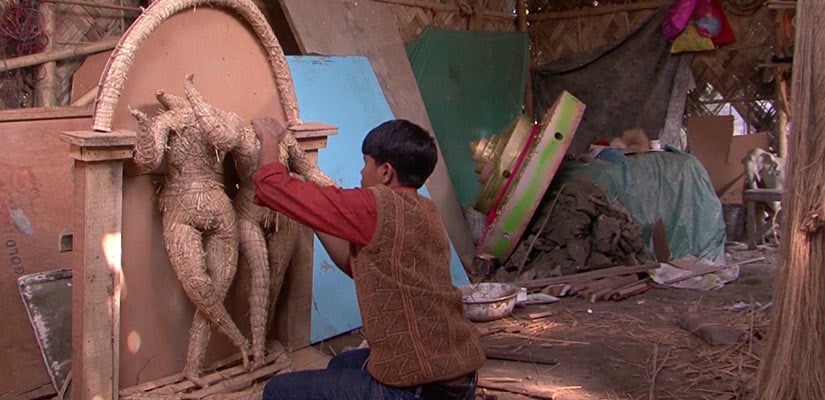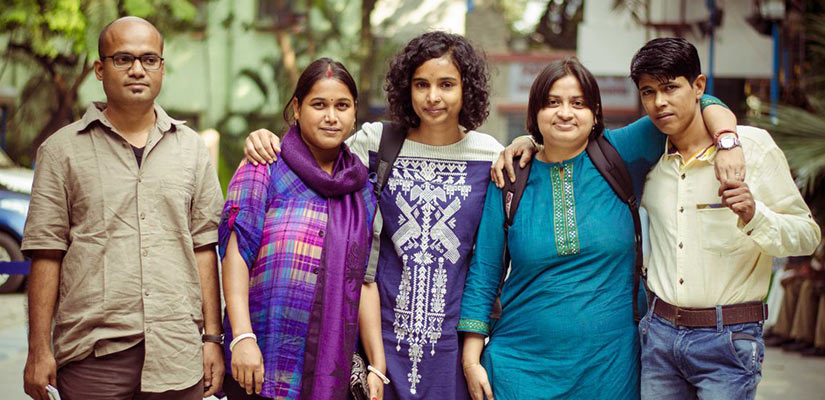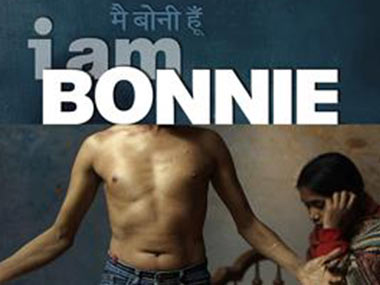Bonnie is on the run, again. He has been, since the year 2000. Bandana Paul is considered to be one of the finest footballers of her time. The last time Bengal lifted the India Women’s Football Championship Cup, which was in 1997, it was because of her decider-goal against Manipur. Its next year was also the last season Bandana played as a professional. Right before the 1998 Bangkok Asian Games, Bandana failed the ‘sex test’. She was officially declared ’not a girl’, and as a result, was dropped from the team and her league club. Bandana was a born intersex, and her family could not handle the media frenzy around this disclosure; the social backlash forced her to leave them behind and fend for herself. Sometime between 2005 and 2006, she underwent a sex reassignment surgery. Bandana became Bonnie.
Bonnie’s life has been nothing less than a roller-coaster ride. His heart-rending journey from being a celebrated sportsperson to an outcast has been candidly captured in the National Award-winning documentary I am Bonnie.
The directors Farha Khatun, Satarupa Santra and Sourabh Dutta started working on this project in 2012. But the research work had begun much earlier. Initially, it was very difficult to locate Bonnie, but after a few months of dedicated scouting, he was finally found in Matigara, a town in Siliguri. Sourabh first met Bonnie sometime around 2004. Later, Satarupa joined in and it was only in 2011 when Farha came on board that the final team was formed. Although Bonnie met Swati, who he calls the love of his life, and was able to marry her, his troubles did not end there. He could not take Swati to his family home in Gaighata, as no one would have accepted them there. Since then, they have been on the run, from one town to another. [caption id=“attachment_4478533” align=“alignnone” width=“825”]  Bonnie and Swati have been on the run since they got married in 2006. Image courtesy of the directors of I am Bonnie[/caption] The film, shot over three years, closely captures Bonnie’s life as an idol-maker, his attempts to reunite with his family, and the ostracism he faced every day, that subsequently forced him to flee from Matigara. But I am Bonnie is more than just an intimate account of the life of an intersex person — it saves itself from becoming a generalised portrayal of the stigma attached to gender dysphoria. What is left — and what it essentially is — is a tale of survival. The documentary was produced with minimal funding; Satarupa and Sourabh, who work as a teacher and a cameraman respectively, had to invest a lot of their own money. Since Farha was fresh out of college, she didn’t have much money to invest, but she was all set to give it her best and spend most of her time working in the film. In 2014, Sourabh pitched the film to the Films Division of India (FDI), after 75-80 percent of the film was already shot. According to Farha, through all of the setbacks and problems that emerged during the filming process, it was Bonnie’s perseverance that kept them going. She says, “He found odd jobs to do. When they (Swati and Bonnie) had money constraints, he worked as a mason, as a pandal maker. He coached kids at the IFA U-14 boys’ coaching camp for eight months, without getting paid. The kind of trauma that he went through, still goes through, I cannot even imagine being in his place. We learnt a lot of things from Bonnie, especially how to survive in adverse situations.” [caption id=“attachment_4478581” align=“alignnone” width=“825”]  Bonnie making idols for Durga Puja. Image courtesy of the directors of I am Bonnie[/caption] Along with Bonnie’s resolve to lead a dignified life, it is Swati’s unfaltering and tacit loyalty to Bonnie that stands out in the film. Even in extreme situations, such as when the Matigara club members threaten Swati with rape if Bonnie refuses to make a pandal for Durga Puja, Swati doesn’t let any fear show. Throughout the film, in all their difficult times, it is Swati’s patience and unwavering faith in him that helps Bonnie to calm down and look forward. I am Bonnie also explores the turbulent relationship Bonnie has had with the media. Although Swati and Bonnie developed quite a strong bond with the three directors during the making of the film, Bonnie still blames the media for his misery. At one instance in the film, unable to deal with his financial problems, Bonnie breaks down and condemns the media, calling it ‘bogus’. At another instance, he says, “The media was writing against me during the 1998 Asian Games, and now, they’re writing for me. How things change.” [caption id=“attachment_4478557” align=“alignnone” width=“825”]  During the making, Bonnie and Swati developed quite a strong bond with the directors of I am Bonnie (from left to right: Sourabh, Swati, Farha, Satarupa, and Bonnie). Image courtesy of Nilanjan[/caption] “Bonnie became like family to us. When he disappeared from Matigara, and we couldn’t locate him for six months, we were more concerned about his well-being than our film. Since we became so close to them, it was very difficult to stay detached from their troubles. There were many such moments where both Bonnie and Swati became so vulnerable that we just couldn’t keep filming,” remarks Farha. Things have changed for the better for Bonnie after the release of the film. Not only has Bonnie found a job as a football instructor in a government coaching camp, but he has also moved back with his family. He’s trying to rebuild his life and find acceptance, but for him, the road to a dignified life is a long one.


)
)
)
)
)
)
)
)
)



